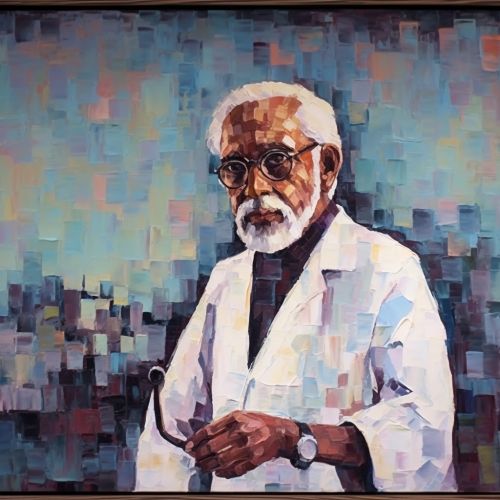Diagnosis
Introduction
Diagnosis is a critical aspect of medical practice and is the process of determining which disease or condition explains a person's symptoms and signs. It is most often referred to as diagnosis with the medical context being implicit. The information required for diagnosis is typically collected from a history and physical examination of the person seeking medical care. Often, one or more diagnostic procedures, such as diagnostic tests, are also done during the process.
Diagnostic Process
The diagnostic process is the method by which healthcare professionals approach the identification of a disease or condition. This process involves a thorough evaluation of the patient's symptoms, medical history, physical examination, and diagnostic testing. The diagnostic process can be divided into several major steps: pretest probability, test selection, interpretation of test results, and post-test probability.
Pretest Probability
Pretest probability is the likelihood that a patient has a particular disease or condition before a diagnostic test is conducted. This probability is determined by the prevalence of the disease in the patient's demographic group and the presence of symptoms or signs that are characteristic of the disease.
Test Selection
Test selection involves choosing the appropriate diagnostic tests based on the pretest probability and the characteristics of the tests themselves. Factors to consider when selecting a test include the sensitivity and specificity of the test, the likelihood of false positive and false negative results, and the cost and availability of the test.
Interpretation of Test Results
Interpretation of test results involves comparing the patient's test results to the normal range for the test and considering the implications of any deviations from the normal range. This step often involves a degree of clinical judgment.
Post-test Probability
Post-test probability is the likelihood that a patient has a particular disease or condition after a diagnostic test has been conducted. This probability is determined by the pretest probability and the results of the diagnostic test.
Diagnostic Methods
There are several methods that can be used in the diagnostic process. These include clinical decision rules, algorithms, and pattern recognition.
Clinical Decision Rules
Clinical decision rules are evidence-based tools that assist clinicians in making diagnostic decisions. They are typically derived from research studies and are designed to improve the accuracy and efficiency of the diagnostic process.
Algorithms
Diagnostic algorithms are step-by-step guides to the diagnostic process for specific diseases or conditions. They typically involve a series of decisions based on the patient's symptoms, signs, and test results.
Pattern Recognition
Pattern recognition is a cognitive process that involves recognizing patterns in the patient's symptoms, signs, and test results that are characteristic of a particular disease or condition.
Challenges in Diagnosis
Despite advances in medical technology, there are still many challenges in the diagnostic process. These include diagnostic errors, overdiagnosis, and underdiagnosis.
Diagnostic Errors
Diagnostic errors are mistakes or failures in the diagnostic process that result in a missed, delayed, or incorrect diagnosis. They are a significant cause of patient harm and are often due to cognitive errors, system-related errors, or a combination of both.
Overdiagnosis
Overdiagnosis is the diagnosis of a disease or condition that would not have caused any symptoms or harm to the patient if it had not been diagnosed. This can lead to unnecessary treatment and patient harm.
Underdiagnosis
Underdiagnosis is the failure to diagnose a disease or condition that is present in a patient. This can lead to delayed treatment and patient harm.
Conclusion
Diagnosis is a complex and critical process in healthcare. It involves a careful evaluation of the patient's symptoms, medical history, physical examination, and diagnostic testing. Despite advances in medical technology, there are still many challenges in the diagnostic process, including diagnostic errors, overdiagnosis, and underdiagnosis.


